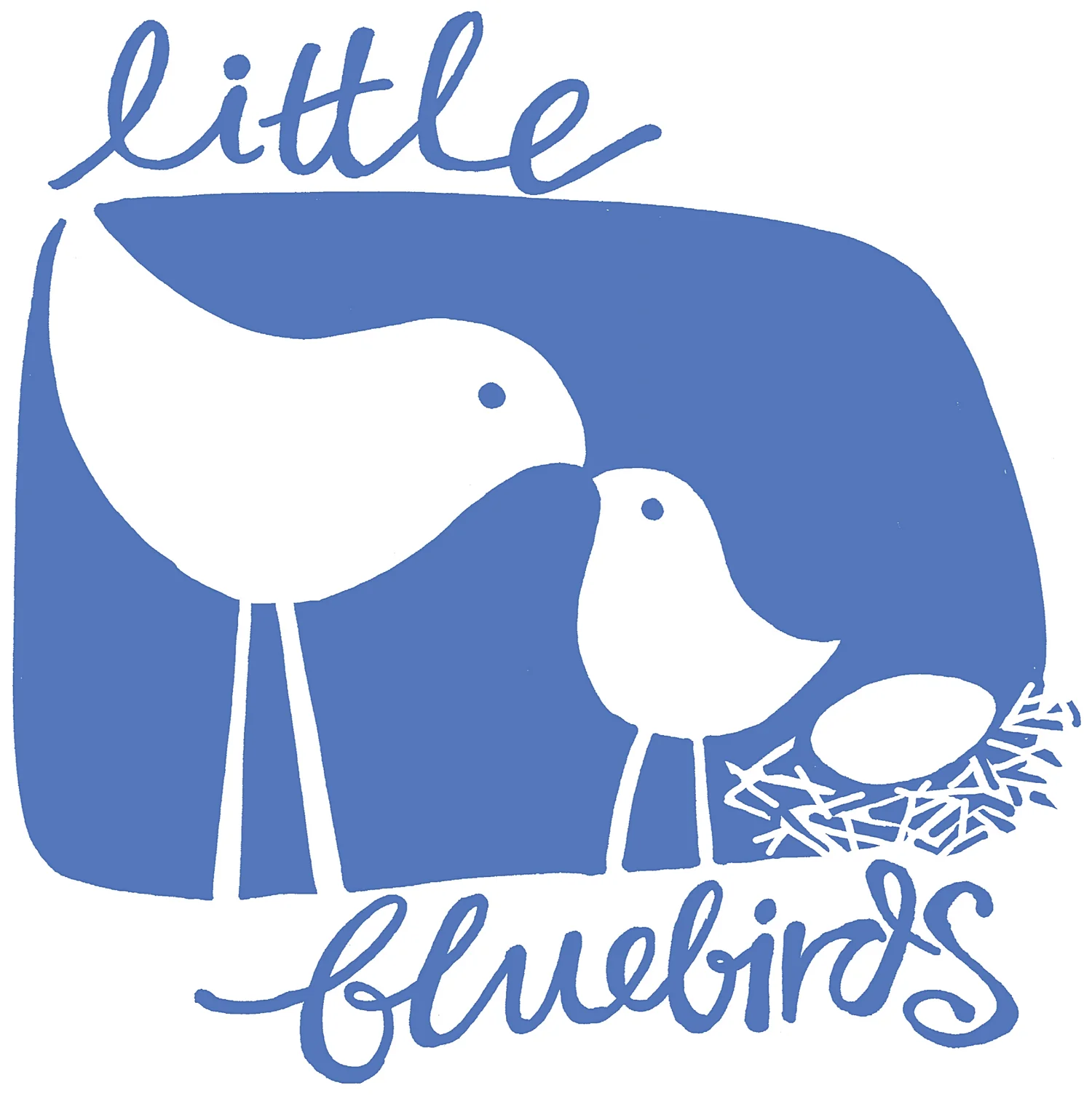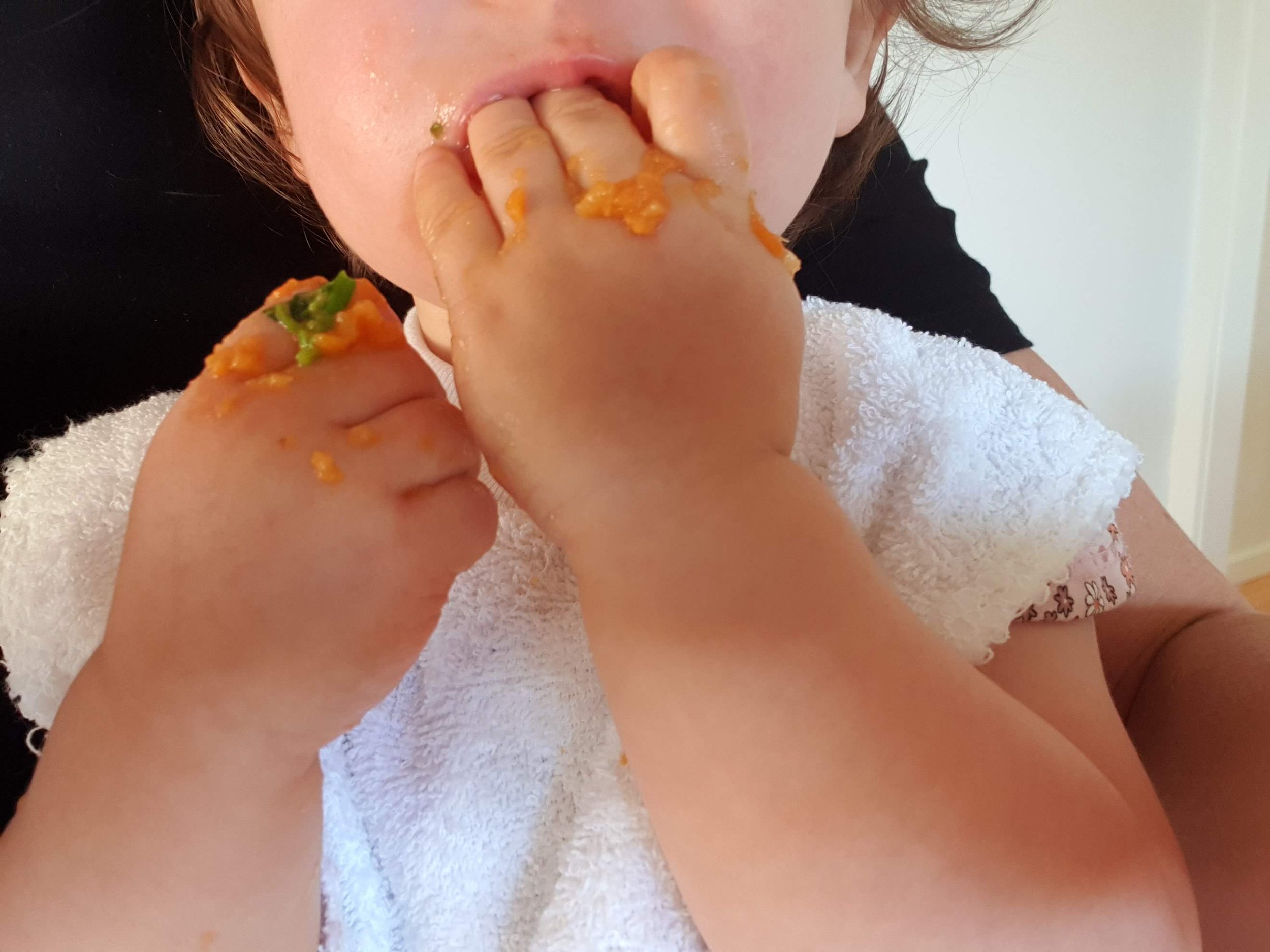Messy Eaters
Discovering food, and establishing preferences and routines for eating, can be quite the adventure. From the first taste of solid food, through the toddler years and even into older childhood, you’re likely to experience some very messy meal times. Should you feel concern for the amount of mess made? Should you rush to clean up their faces/the kitchen and restore order. Or can you instead focus on the enjoyment of the food?
As with all things parenting, there’s a balance somewhere, that may look quite different for different families. I’m going to attempt to sway you towards finding time to embrace messiness! Creating space for your young child to explore food with their hands, mouths, their whole face or body, can be rewarding and fun. It can also be fabulous for their growth and development (and perhaps yours too).
Getting comfortable with the mess
I know that eating is messy. Feeding children can be wasteful, chaotic and unpredictable. Food lands on the floor or gets played with. The food may be rejected by the child in all manner of ways. Bowls/plates can be knocked or tipped or food smooshed between little fingers. Food is wiped onto clothes and faces and toys and the floor. Crumbs and sauce and sticky food ends up in their hair, on their hands, all over their face and on the table/the highchair tray/the floor/their siblings/the dog…
Whilst some adults may scoff, baulk or attempt to reprimand you with advice about the importance of manners, making a mess can be a developmentally valuable option. If your child is already joyful and adventurous with their food, being comfortable with mess can increase the breadth of food preferences and exposure to textures, flavours and ways of eating. If you or your child are displaying challenging behaviours around mealtimes (feeling anxious, avoidant, refusal to eat, crying), a focus on play, discovery and exploration of textures can also be a great starting point for progress.
It can take multiple exposures for new foods to be accepted by a child, so give them plenty of opportunities to become familiar. The food may not always make it into their mouth initially, or may be spat out rather than swallowed a few times. Be mindful of your reaction and creative in the words/expressions you use to respond. As you become more comfortable with the process, and your child becomes more comfortable with the food, more of it will hopefully make it to their tummy.
Whilst learning manners at the dinner table is important, here are some extra ideas to inspire you to embrace the mess too;
Make space for the creative exploration to happen in a relaxed way. Your feelings, as their care-giver, can impact your child. If you feel awkward or anxious, take it one step at a time or get a more comfortable parent/friend to help out. We all know those children who won’t eat a food at home with a parent, but consume it happily at childcare or their cousin’s house! Let your village come in and support you if this is an area that feels overwhelming.
Meet your child where they are at with food and take it one meal/snack at a time. Resist the urge to dive straight to a giant, wild mess as this may be overwhelming for your child (and/or you).
Create space for the exploration to be at the child’s pace. Children will find their comfort with the messiness/food too. I’ve known babies who are just too hungry to play around! They just want to get eating and the messy “play” can become frustrating for them if imposed by their adult caregiver.
Expect to continue at a pace you are both comfortable with. There is a lot of time to explore food during childhood! Don’t feel like you need to have it all sorted in a week.
Share your own meal with your child. I bet you all know a child who will shun their own meal, but will willingly climb on an adult lap and share an adult meal! Be clear with your boundaries about what food is suitable, depending on the age and stage of the child (I’m thinking about salt levels, spiciness, choking-hazard etc).
Share your child’s meal! Eat some smooshed banana and avocado with your hands at the same time as them (I know this is REALLY gross for some, but can be wildly funny for others. It may depend on the child, the adult and the mood on the day). Needless to say, make sure your hands/nails are clean before you do so!
Make sure your child is not too tired or too hungry for playful eating. Anything that overwhelms quickly is likely to get in the way of progress.
Reframe your view of a meal by seeing it as a sensory or creative experience too.
Make sure you have some time and space to relax too. Know that there might be a bit of mess to clean up and make sure you have mental space for this too. Maybe don’t plan a messy meal just before a childcare drop off or a MCHN appointment!
Go Outside
This is nearly always my favourite way to be comfortable with messy eaters! Use a table and chair, a picnic rug or simply sit on the grass. The top of the slide or the trampoline can also work. Suitable for breakfast, lunch, dinner and any snack in between!
Do your best to create a space that encourages your child to sit while they eat. I know that this is not always possible with the combination of busy little ones and tired adults. Will any of these captivate your child and work for your family?.
Use a food box with lots of small options that little fingers can access,
grab a book to read at the same time
listen to the birds or have a chat about life and your day
make sure they are actually hungry enough to eat,
share food with them and invite other friends/family along too.
focus on the food and the environment, rather than the mess being made.
Some messes can be sorted out by shaking out the picnic blanket and leaving the clean-up to pets, the local birds or insects. Other messes can be sorted with a quick hose-down or a bath.
The Clean up
Find a relaxed space for clean up too. Resist the urge to rush and hurry the clean up once they’ve eaten enough. I know little ones and family life can be busy, so think about the importance of “rest and digest” around eating times. Grab a warm cloth and give their hands and face a gentle wipe. If they’re old enough to help out, clean up the bench/highchair/floor or table with them (this one clearly needs your own judgement for your circumstances!). A bath is often a worthwhile next step after a messy meal as it can continue to support calming.
Normalise that it’s ok for a young child to be messy when they are discovering food. Know that clean up is important, but not so urgent that it outdoes all the calm, playfulness of the eating experience.
A last note on choking risk
There is always an element of choking risk for little ones when eating. Whilst it is not possible to completely remove the risk, there is much you can do to minimise it. Check in with your healthcare professional if you need some more support or more information..
If you know yourself to be feeling hyperalert about the risk of choking, this can distress a child and make a feeding environment tense. A tense environment can contribute to food/feeding issues, which can be a hard cycle to break (for you and the child). If knowing more about how to respond well, and manage choking effectively, sounds like it’ll help you feel less anxious, book yourself into a baby/child first aid course.







